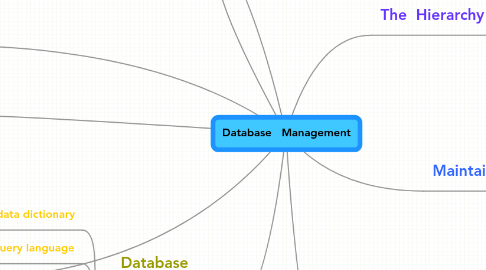
1. Databases,Data,and Information
1.1. Database
1.2. Data
1.3. Information
2. Database Management Systems
2.1. A data dictionary
2.2. A query language
2.3. Query by example(QBE)
2.4. A form
2.5. A report generator
3. Relational,Object-Oriented,and Multidimensional Databases
3.1. A data model
3.2. A relational database
3.2.1. Each rowhas a primary key
3.2.2. Each columnhas a unique name
3.3. A relationship
3.4. Structured Query Language(SQL)
3.5. An object.oriented database (OODB)
3.6. A multidimensional database
3.7. A data warehouse
4. Web Databases
4.1. Databases on the Web allow you to
4.1.1. Shop for products or services
4.1.2. Buy or sell stocks
4.1.3. Search for a job
4.1.4. Make airline reservations
4.1.5. Register for college classes
4.1.6. Check semester grades
5. Video:How a Photo Sharing site Keeps Its Data
6. Database Administration
6.1. It is important to have a carefully designed database
6.2. Employees should learn how to use the data in the database effectively
6.2.1. Interact with database
6.2.2. Identify new data for the database
6.2.3. Maintain the database
7. The Hierarchy of Data
7.1. A character is one byte
7.2. A field is a combination of one or more related characters
7.3. A record is a group of related fields
7.4. A data file is a collection of related records
8. Maintaining Data
8.1. File maintenance
8.1.1. Adding records
8.1.2. Modifying records
8.1.3. Deleting records
8.2. Validation
8.2.1. compares data with a set of rules or values to find out if the data is correct
9. File Processing Versus Databases
9.1. File processing system
9.1.1. Each department has its own set of files
9.1.2. Used for many years
9.1.3. Have data redundancy
9.1.4. Isolate data
9.2. Database approach
9.2.1. Programs and users share data
9.2.2. Reduce data redundancy
9.2.3. Improve data integrity
9.2.4. Share data
9.2.5. Allows easier access
9.2.6. Reduces development time
9.2.7. Can be more vulnerable
